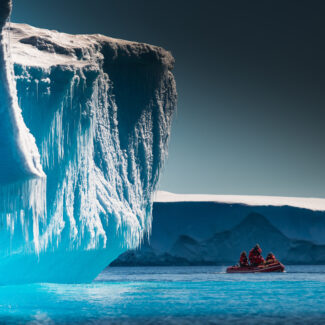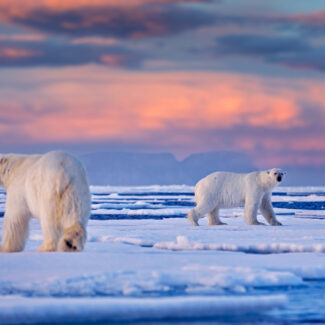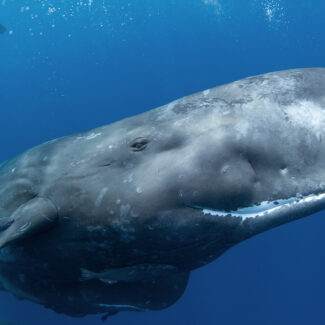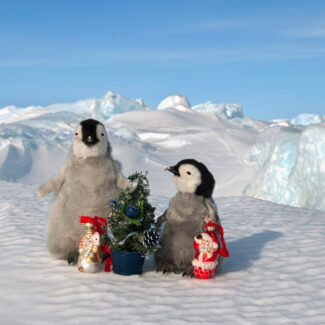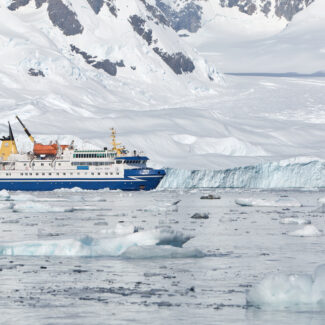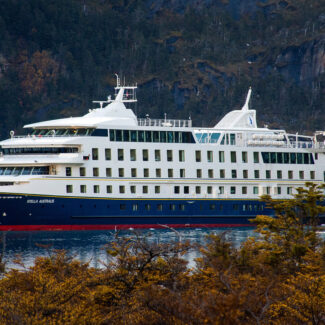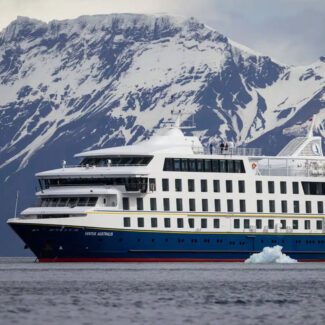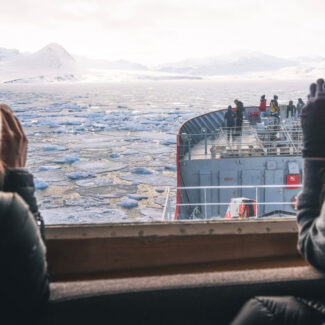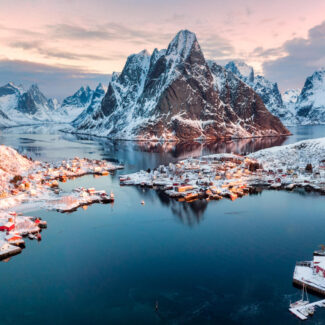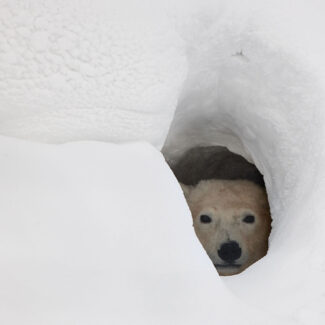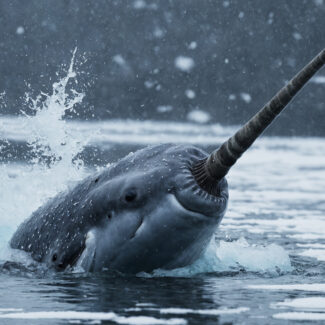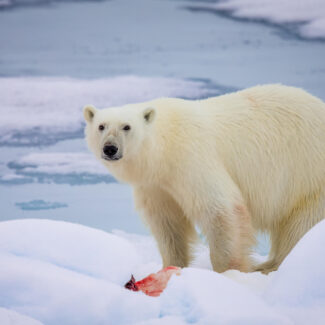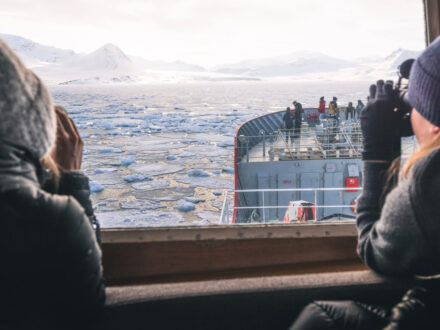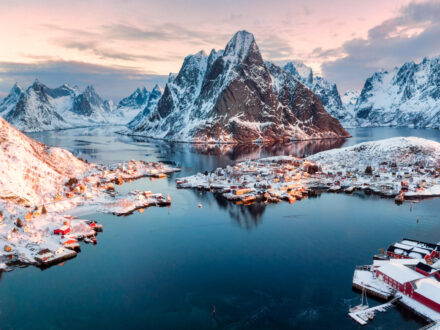Top 10 Antarctica Landmarks, Wonders & Attractions To See
From the cliffs, icebergs, and ice-shelf ramparts of the coast to the unbelievably wild depths of its Polar Plateau, Antarctica presents one of the most utterly extraordinary landscapes on Earth with natural wonders aplenty that have to be seen to be believed.
Throw in the magnificent wildlife hubbub along its shores and ice fronts, the traces of bygone explorers, the flawless night skies and Southern Lights—well, let’s just say the White Continent makes for mind-bogglingly rewarding travel.
When it comes to such a vast continent—and the equally remarkable Antarctic and sub-Antarctic islands readily combined on a cruise—it’s tough to define a short-and-sweet list of the very best Antarctica landmarks, natural wonders and tourist attractions. But that’s just what we’re attempting to do in this (ambitious) roundup of veritable Antarctica highlights that shouldn’t be missed!
Antarctica Attractions: Top 10 Things to See in Antarctica
Given the challenge of winnowing down the vast number of Antarctica tourist attractions to behold to a mere ten, it’s true enough that you could easily swap in others on the following list. But, without question, these landmarks and locations rank among the most extraordinary highlights of the frozen continent.
1. McMurdo Dry Valleys
Some of the most enigmatic natural attractions in Antarctica, the McMurdo Dry Valleys constitute the continent’s largest expanse of mostly ice-free ground: the greatest of the so-called “Antarctic oases,” covering some 1,900 square miles (4,800 square kilometers) to the west of McMurdo Sound. The Transantarctic Mountains wall these broad defiles in and help establish their drastically dry climate: by preventing glacial incursion, by casting them in a rainshadow, and by sweeping them with strong (sometimes hurricane-force) and parching katabatic winds. These dry valleys, which include the Taylor, Wright, and Victoria, are frigid deserts that appear to have essentially received no precipitation for some two million years.
Among their many striking landmarks are the seasonal meltwater flow of the Onyx River, the über-salty Don Juan Pond, and the undeniably sinister-looking Blood Falls. The latter is a crimson cascade flowing out of Taylor Glacier onto the ice of West Lake Bonney. Its waters drain a subglacial saltwater pool long sealed off from oxygen, where microbes convert iron to a soluble form; that soluble iron reacts with oxygen when the water is exposed to air, producing the gory hue of the falls.
Witness the otherworldly beauty of the McMurdo Dry Valleys, a stark and stunning testament to Antarctica’s diverse landscapes. This glacier, with its dramatic ice face, perfectly illustrates the unique geological wonders waiting to be explored in this remote region.
2. Brown Bluff
Set on the Tamarin Peninsula, Brown Bluff is a striking example of a tuya: a flat-topped, mesa-like volcano that owes its form to eruption under ice cover. Its rusty cliffs, contrasting eye-catchingly with the tuya’s snow streaks, incorporate volcanic bombs, and overlook a cobble-ash beach supporting a large colony of Adélie penguins (as well as some gentoos).
Brown Bluff, a dramatic volcanic landmark, showcases Antarctica’s fiery past and icy present. This breathtaking sight, with its distinctive reddish-brown cliffs and snowy peaks, is a must-see for any adventurer seeking to explore the continent’s most captivating natural wonders.
3. The Lemaire Channel
Famously photogenic—enough that it’s earned the nickname of “Kodak Alley” or “Kodak Gap”—the Lemaire Channel forms a mountain- and ice-edged strait between the Antarctic Peninsula and Booth Island. Some seven miles long and less than 2,000 feet across at its narrowest point, the Channel presents sublime scenery with its rock/ice/water mosaic, notable landmarks including the twin basalt spires of the Una Peaks that lord over the northern entrance. Icebergs are common sights, especially early in the summer (when they sometimes clog the Channel), while later in the season you’ll often spot whales cruising here.
Prepare to be mesmerized by the Lemaire Channel, often called “Kodak Alley” for its unparalleled photographic opportunities. As you navigate these serene waters, towering snow-capped peaks mirror perfectly, creating a breathtaking panorama that truly captures the magic and majesty of Antarctica.
4. Mount Erebus
The 12,448-foot crown of mountainous Ross Island in the Ross Sea, Mount Erebus is the only known active volcano on the Antarctic mainland—and the southernmost active volcano in the world! This commanding fire mountain, an icy stratovolcano, looms to a summit crater glowing with one of the planet’s relative handful of lava lakes. Cruises to the Ross Sea can serve up memorable views of Mount Erebus, a rare chance to witness one of the greatest geological wonders of Antarctica.
Gaze upon the awe-inspiring Mount Erebus, Antarctica’s most active volcano and a true natural wonder. This majestic, snow-covered giant, often veiled in dramatic clouds, stands as a testament to the continent’s powerful and dynamic geological forces, offering a truly unique sight for adventurers.
5. The Ross Ice Shelf
Speaking of the Ross Sea, the biggest of Antarctica’s many ice shelves—where continental glaciers draining the ice sheet nose out onto the ocean—covers much of its southern half, covering close to 200,000 square miles (508,000 square kilometers). The roughly France-sized Ross Ice Shelf, the above-water ramparts of which loom as high as 160 feet (50 meters), was known as “The Barrier” by early Antarctic explorers such as Ernest Shackleton, and is fed by glaciers flowing off the West Antarctic Ice Sheet. The sight of its white wall becomes branded into the memory of anyone who sees it.
Prepare to be dwarfed by the sheer scale of the Ross Ice Shelf, the largest ice shelf in the world. This colossal natural wonder, with its immense ice cliffs stretching for miles, offers a profound sense of awe and a powerful reminder of Antarctica’s incredible, frozen grandeur.
6. The Antarctic Circle
Unlike the Ross Ice Shelf, the Antarctic Circle is invisible. Yet crossing this latitudinal boundary demarking the Antarctic realm proper is a special thrill, one a relatively few people ever experience. Indeed, not all cruises to Antarctica make it past this circle of latitude, as the northern segment of the Antarctic Peninsula—the most-visited destination on the White Continent—extends north of it.
Crossing the Antarctic Circle is a momentous achievement, marking your entry into the Earth’s southernmost region. Here, vast expanses of sea ice meet magnificent snow-draped mountains, offering an unparalleled sense of untouched wilderness and an unforgettable adventure.
7. Snow Hill Island
This snow-capped, ice-edged isle off the Trinity Peninsula along the Antarctic Peninsula’s Weddell Sea coast is remote and hard to reach, but nonetheless very much a coveted destination. That’s because Snow Hill Island is one of the foremost natural wonders of Antarctica, host to the northernmost rookery of emperor penguins—the largest and best-known of all penguin species—in the world: some 4,000 breeding pairs. Emperors are famously hardy birds: the only penguins to breed during the Antarctic winter. While most breeding colonies are terrifically remote, following timetables that don’t allow for easy viewing by tourists, Snow Hill Island provides a rare chance to see these iconic creatures in the flesh.
The colony resides on the ice off the southwestern coast of Snow Hill Island, and some tours will attempt to reach it—via expedition vessel and helicopter—early in the season when emperor chicks are still likely to be seen.
Snow Hill Island is a true sanctuary, renowned for its magnificent Emperor penguin colony. Witnessing these majestic birds in their natural habitat, against a backdrop of stunning ice formations, is an incredibly moving and unforgettable experience that epitomizes the wild beauty of Antarctica.
8. The Vinson Massif
The high point of Antarctica, the Vinson Massif provides the spectacular, 16,050-foot culmination of the White Continent’s loftiest mountain chain: the Sentinel Range, part of the larger system of the Ellsworth Range along the Ronne Ice Shelf. Climbers aiming to complete the Seven Summits—topping the highest peaks on every continent—have Mount Vinson as their chief goal here, but there are other mighty mountains in the Sentinels, including 15,919-foot Mount Tyree, 15,883-foot Clinch Peak, and 15,820-foot Corbet Peak.
While not directly pictured in its full glory, the spirit of the Vinson Massif, Antarctica’s highest peak, embodies the continent’s incredible allure. This stunning landscape, with its majestic mountains and serene waters, invites adventurers to explore the breathtaking vistas and challenging terrain that make Antarctica the ultimate frontier.
9. The Geographic South Pole
The Geographic South Pole must be the single most famous landmark in Antarctica, yet comparatively few tourists make the trip here. But it’s certainly possible to do so during the summer, whether you’re just flying over or touching down and visiting on foot or by skis. The Ceremonial South Pole close to the actual geographic pole provides a classic photo op with the flags representing the original nations signatory to the Antarctic Treaty, and meanwhile the U.S.-run Amundsen-Scott South Pole Station, the local research base, is its own attraction.
Stand at the geographic South Pole, where an array of international flags encircles the ceremonial pole, marking a truly monumental achievement and a global symbol of exploration.
10. South Georgia
The spectacular Antarctic island of South Georgia—part of a British Overseas Territory with the South Sandwich Islands, set in the Scotia Sea at the frontier between the South Atlantic and the Southern Ocean—makes a genuine highlight of a stopover on certain White Continent itineraries. Once home to whalers and a base of research, South Georgia lacks a permanent human population now, and can hold its own with any island in the world for scenery and wildlife. Snow- and ice-swaddled mountains rear past 9,000 feet, walling in fjords and backdropping beaches that support globally significant pinniped and seabird rookeries.
Home to a number of penguin species—including the king, second-largest of all penguins after the emperor—as well as leopard and fur seals, South Georgia is perhaps best known for supporting the single largest colony of southern elephant seals in the world. These biggest of all pinnipeds—males may reach 20 feet and weigh more than 10,000 pounds—breed here in December and January, the gigantic bulls battling it out to control turf as the dominant, bloodied “beachmaster.”
Prepare for an explosion of wildlife at South Georgia, a sub-Antarctic paradise teeming with life! Witness thousands of King penguins waddling along black sand beaches, alongside seals and other incredible creatures, all set against a backdrop of dramatic, snow-capped mountains. It’s an unforgettable spectacle of nature’s abundance.
What to See in Antarctica
The beautiful desolation of the South Pole, the iceberg clutter of the Lemaire Channel, the grand faces of the Ellsworth Mountains, the seal and penguin dramas of South Georgia’s seaboard: The magic of the Antarctica tourist attractions we’ve highlighted above transcends the power of language. These are places to make an effort to see firsthand.
Disclaimer
Our travel guides are for informational purposes only. While we aim to provide accurate and up-to-date information, Antarctica Cruises makes no representations as to the accuracy or completeness of any information in our guides or found by following any link on this site.
Antarctica Cruises cannot and will not accept responsibility for any omissions or inaccuracies, or for any consequences arising therefrom, including any losses, injuries, or damages resulting from the display or use of this information.


